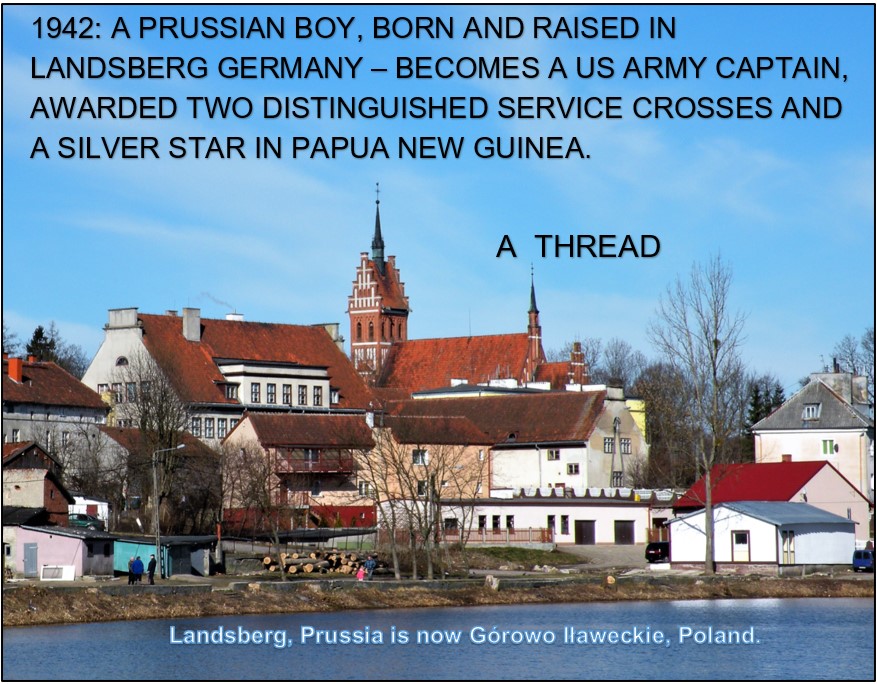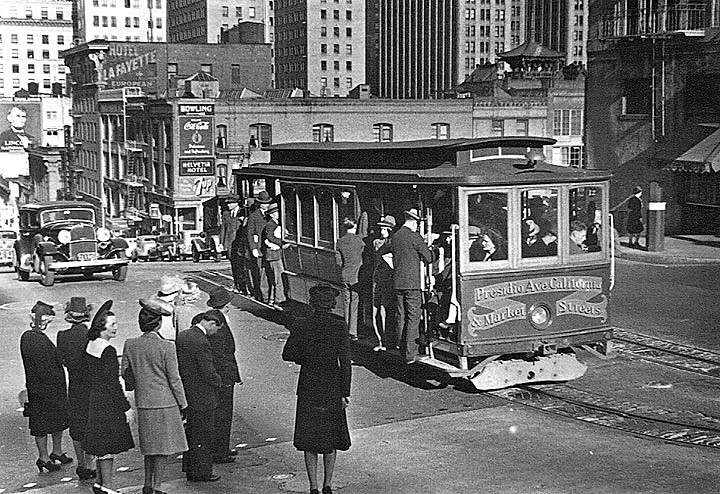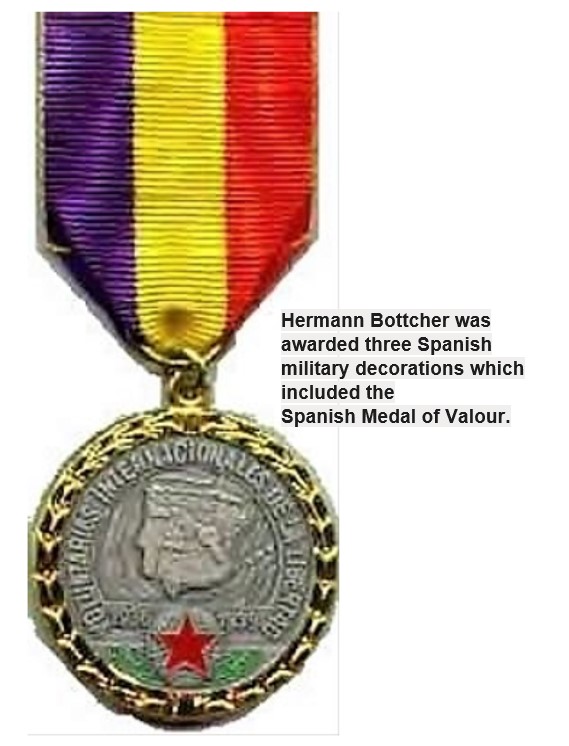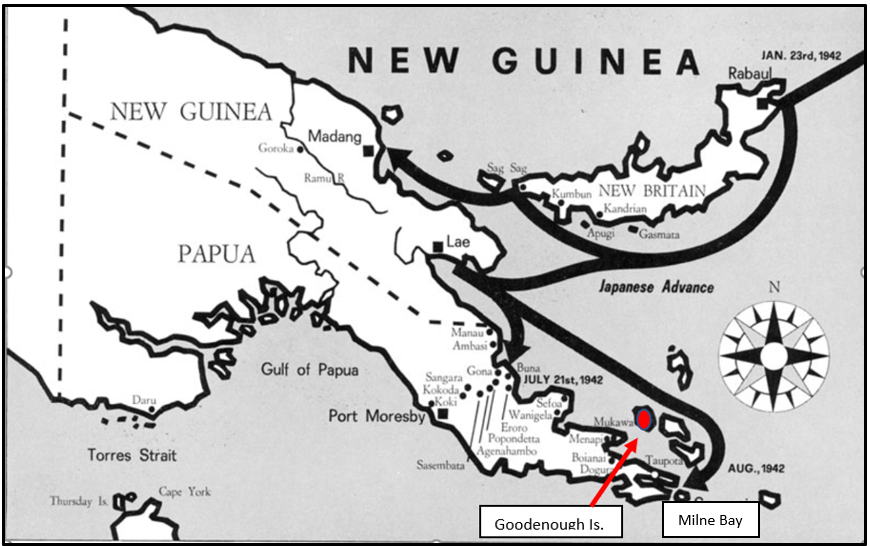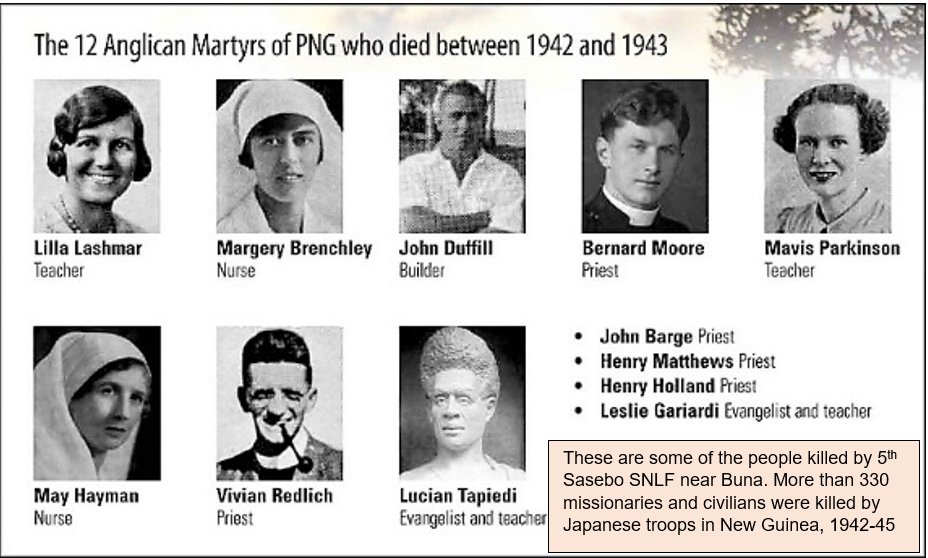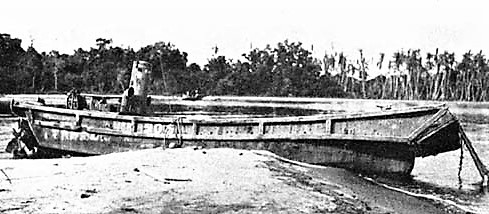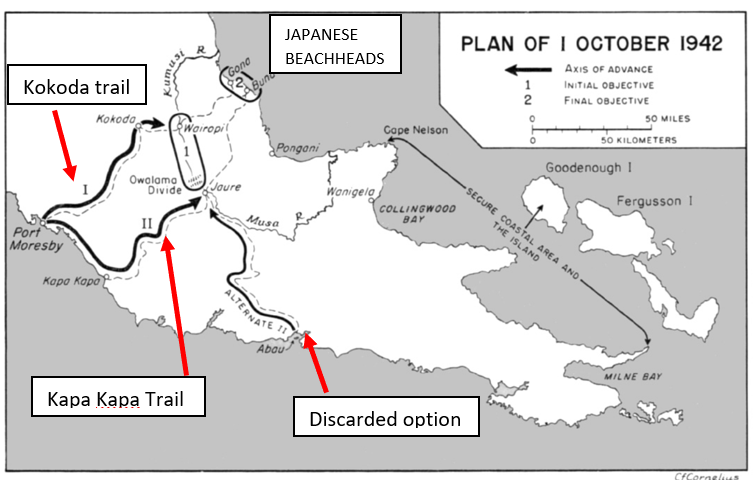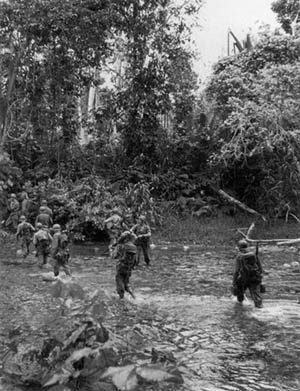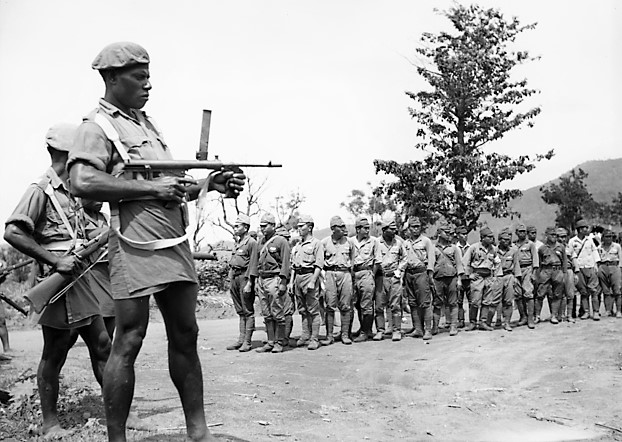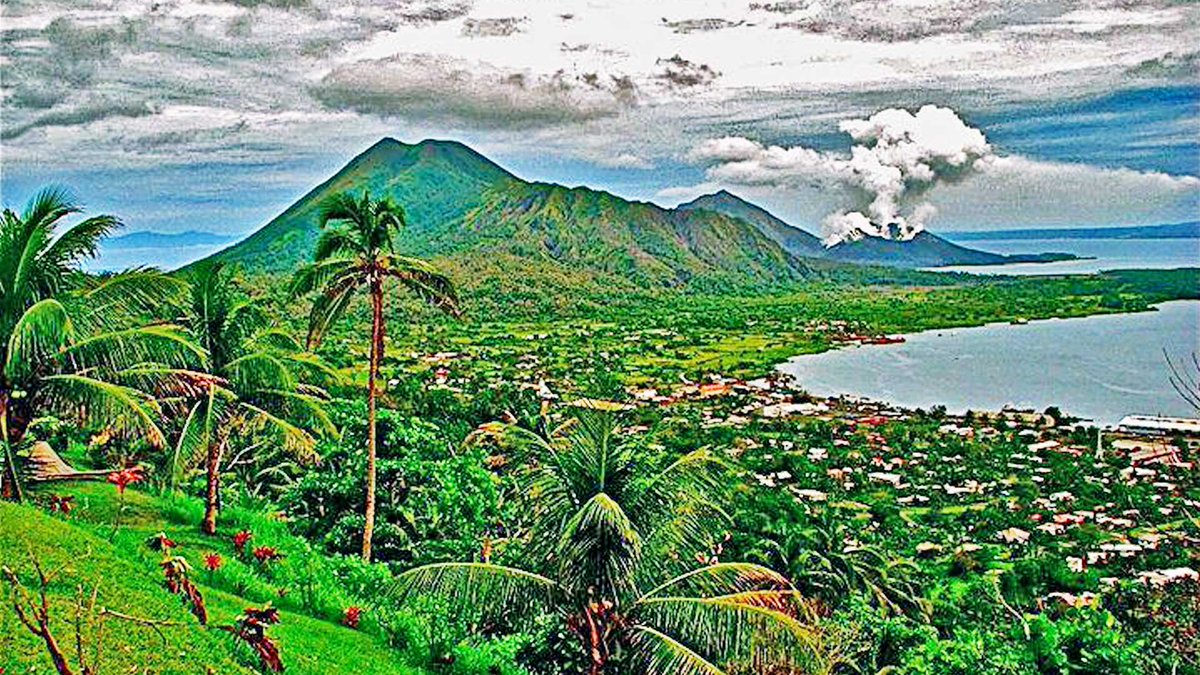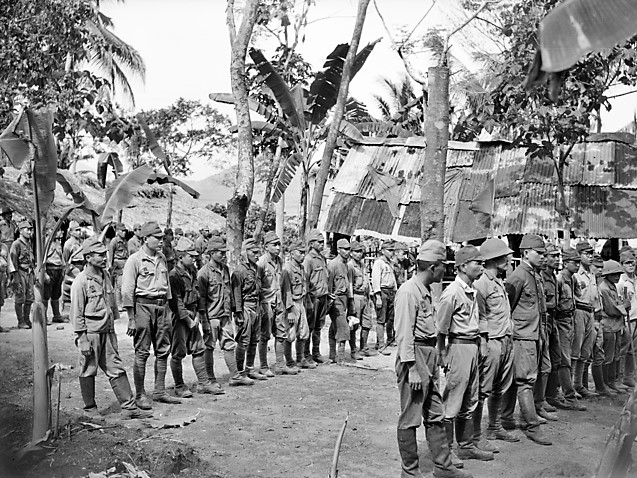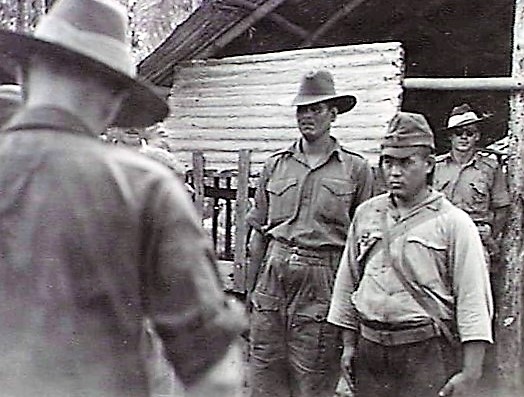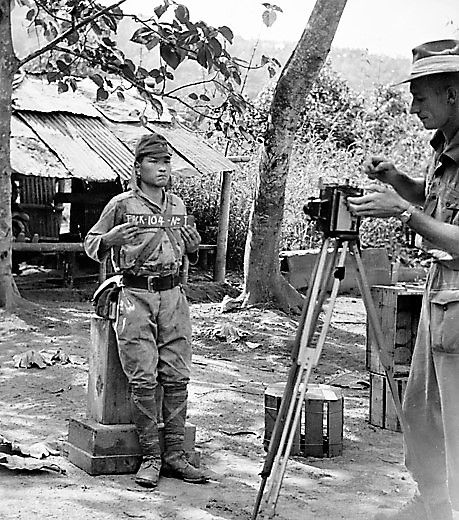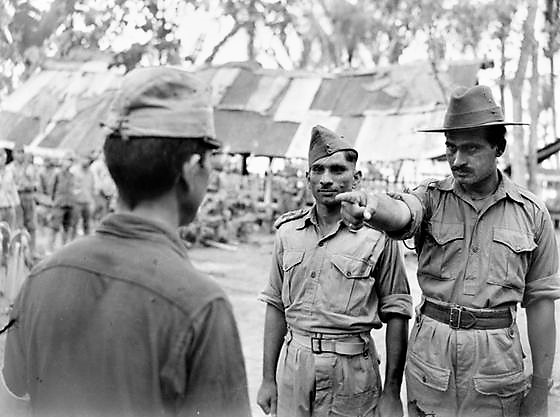
AKIKAZE ATROCITY
Thread
WARNING: Stark Facts
1
In 1884 Germany claimed NthEast New Guinea despite Bismarck saying privately “the entire colonial idea is humbug; however, we need it to win the vote of the people.”
German missionaries soon began to build missions along the coasts.
Thread
WARNING: Stark Facts
1
In 1884 Germany claimed NthEast New Guinea despite Bismarck saying privately “the entire colonial idea is humbug; however, we need it to win the vote of the people.”
German missionaries soon began to build missions along the coasts.
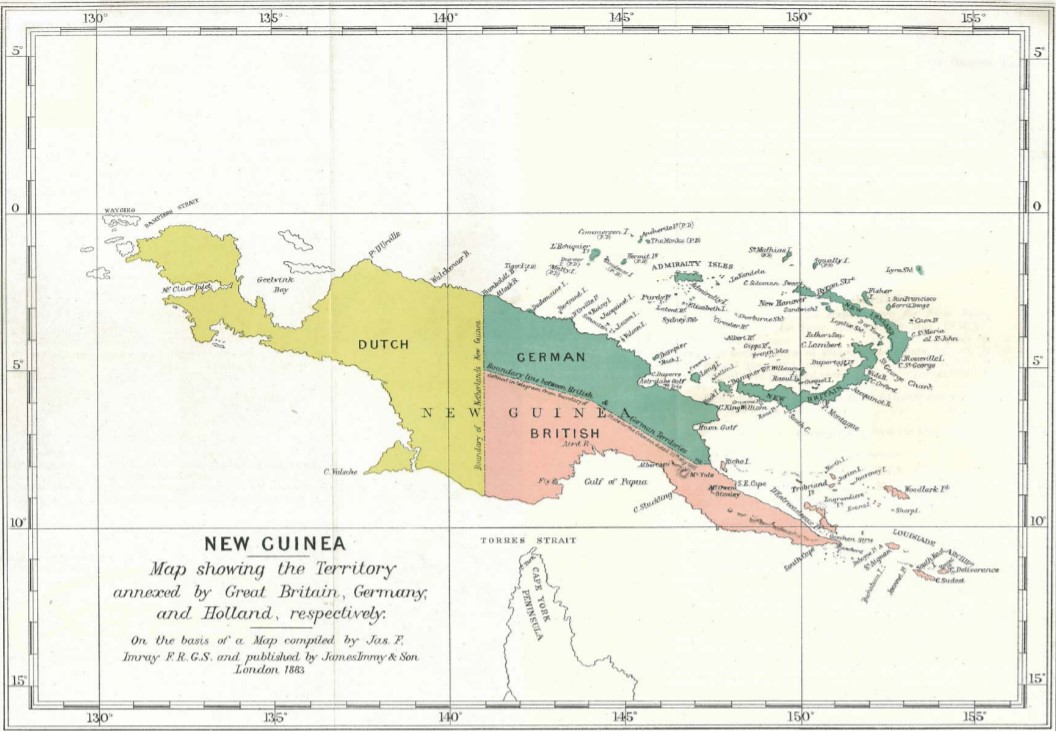
2/21
Since 1892 in northern New Guinea, Catholic German missionaries of the Society of the Divine Word had carried out their work around Wewak. Along with the Holy Spirit Sisters they managed basic hospitals and schools teaching agriculture, hygiene, carpentry, childcare, etc.
Since 1892 in northern New Guinea, Catholic German missionaries of the Society of the Divine Word had carried out their work around Wewak. Along with the Holy Spirit Sisters they managed basic hospitals and schools teaching agriculture, hygiene, carpentry, childcare, etc.

3
Japanese troops occupied the area 50 years later. The mostly German Catholic missionaries, led by Bishop Josef Lörks knew that Germany and Japan were Axis allies. The missionary German priests and nuns were also under the direct protection of the Vatican City, a neutral nation.

Japanese troops occupied the area 50 years later. The mostly German Catholic missionaries, led by Bishop Josef Lörks knew that Germany and Japan were Axis allies. The missionary German priests and nuns were also under the direct protection of the Vatican City, a neutral nation.


4
Despite nearly all the clergy being German, the Japanese, were unable or possibly unwilling to differentiate friendly from neutral or enemy civilians.
They ordered Bishop Lörks and his priests, nuns and brothers and other foreigners to be isolated on Kairiru Island off Wewak.
Despite nearly all the clergy being German, the Japanese, were unable or possibly unwilling to differentiate friendly from neutral or enemy civilians.
They ordered Bishop Lörks and his priests, nuns and brothers and other foreigners to be isolated on Kairiru Island off Wewak.

5
By 1943 Australian guerrilla units were observing enemy movements and reporting information to Allied HQ. Bombers hit Japanese targets.
The Japanese, baffled by the accurately timed attacks, suspected some missionaries were transmitting data by radio & helping downed aircrews.
By 1943 Australian guerrilla units were observing enemy movements and reporting information to Allied HQ. Bombers hit Japanese targets.
The Japanese, baffled by the accurately timed attacks, suspected some missionaries were transmitting data by radio & helping downed aircrews.

6
Vice Admiral Shinzo Onishi, Chief of Staff of the Japanese 8th Fleet HQ, Rabaul, ordered the Japanese troops on Kairiru Island to place all German civilians aboard the destroyer Akikaze (秋風) "Autumn Wind", under command of Lt-Cdr Sabe Tsurukishi, for transportation to Rabaul.
Vice Admiral Shinzo Onishi, Chief of Staff of the Japanese 8th Fleet HQ, Rabaul, ordered the Japanese troops on Kairiru Island to place all German civilians aboard the destroyer Akikaze (秋風) "Autumn Wind", under command of Lt-Cdr Sabe Tsurukishi, for transportation to Rabaul.

7
Forty Catholic missionaries with Bishop Josef Lörks were put aboard, with six priests, 14 friars, 18 nuns.
31 were Germans like Father Andreas Mueller; 3 Americans: e.g. Rev. Arthur Manion of Pittsburgh; Brother Victor of Linwood, Mich.; and Sister Adelaide of Freeport, Minn.
Forty Catholic missionaries with Bishop Josef Lörks were put aboard, with six priests, 14 friars, 18 nuns.
31 were Germans like Father Andreas Mueller; 3 Americans: e.g. Rev. Arthur Manion of Pittsburgh; Brother Victor of Linwood, Mich.; and Sister Adelaide of Freeport, Minn.

8
As well, a local girl embarked with two small Chinese orphans.
Once all were aboard, the Japanese destroyed all traces of the missionaries’ work that had been carefully constructed over the previous decades. They burnt down churches, clinics and houses and killed some villagers
As well, a local girl embarked with two small Chinese orphans.
Once all were aboard, the Japanese destroyed all traces of the missionaries’ work that had been carefully constructed over the previous decades. They burnt down churches, clinics and houses and killed some villagers

9
That day Akikaze sped 450km NE to Manus Island, where another 20 mostly German civilians boarded; six Liebenzell Evangelical Missionaries, one 55yo female Hungarian missionary, 6 Chinese women, 2 German plantation managers, a European child, two Chinese men and four Malays.

That day Akikaze sped 450km NE to Manus Island, where another 20 mostly German civilians boarded; six Liebenzell Evangelical Missionaries, one 55yo female Hungarian missionary, 6 Chinese women, 2 German plantation managers, a European child, two Chinese men and four Malays.
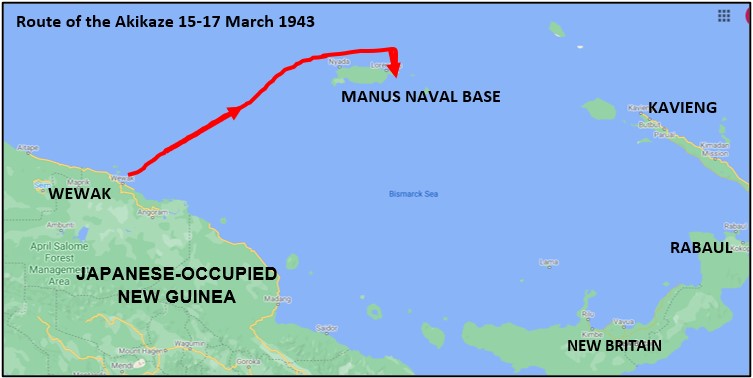

10
At first, the internees were fed and well taken care of. Captain Sabe removed some of his crew from forward quarters so the civilians would be sheltered from Allied fire in case his ship encounter Allied forces. Furthermore, the surgeon was ordered to attend to sick passengers
At first, the internees were fed and well taken care of. Captain Sabe removed some of his crew from forward quarters so the civilians would be sheltered from Allied fire in case his ship encounter Allied forces. Furthermore, the surgeon was ordered to attend to sick passengers
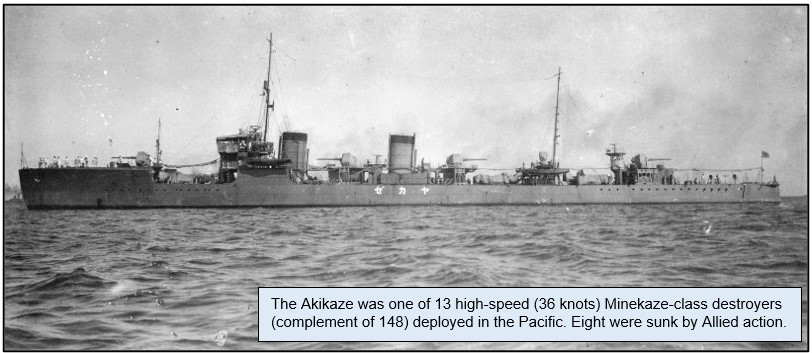
11 The POWs were told that they were to be interned at Rabaul.
Next day, Akikaze arrived off Kavieng, stopping briefly to receive a sealed message. The message rattled Sabe, who informed his officers that 8th Fleet HQ had issued orders “to dispose of neutral civilians on board.”
Next day, Akikaze arrived off Kavieng, stopping briefly to receive a sealed message. The message rattled Sabe, who informed his officers that 8th Fleet HQ had issued orders “to dispose of neutral civilians on board.”

12
A wooden platform was quickly constructed over the fantail, covered with straw mats to soak up blood.
A rig was made in order to raise victims by the wrists using a rope & pulley.
Canvas screens were spread amidships to prevent the 60 civilians from viewing the ship’s stern.
A wooden platform was quickly constructed over the fantail, covered with straw mats to soak up blood.
A rig was made in order to raise victims by the wrists using a rope & pulley.
Canvas screens were spread amidships to prevent the 60 civilians from viewing the ship’s stern.

13
Beginning with Bishop Lörks and then the priests, passengers were taken singly amidships, and calmly asked a few personal details designed to relax the prisoner.
Then a sailor took each arm and they were walked behind the starboard canvas screen, blindfolded, with wrists bound
Beginning with Bishop Lörks and then the priests, passengers were taken singly amidships, and calmly asked a few personal details designed to relax the prisoner.
Then a sailor took each arm and they were walked behind the starboard canvas screen, blindfolded, with wrists bound

14
One by one, they were quickly taken to the stern and placed on the wooden platform.
Then crewmen turned them to face toward the bow, their hands raised up by means of a hook attached to a pulley.
At an officer's firm order, they were hoisted up by the wooden rig above the deck
One by one, they were quickly taken to the stern and placed on the wooden platform.
Then crewmen turned them to face toward the bow, their hands raised up by means of a hook attached to a pulley.
At an officer's firm order, they were hoisted up by the wooden rig above the deck

15
At a given signal the Akikaze would suddenly increase speed. The firing squad then aimed at the suspended victim and dispatched him/her with a few shots, along with a burst from a lieutenant's submachine gun.
The engine noise, the wind and turbulence disguised the gunshots.
At a given signal the Akikaze would suddenly increase speed. The firing squad then aimed at the suspended victim and dispatched him/her with a few shots, along with a burst from a lieutenant's submachine gun.
The engine noise, the wind and turbulence disguised the gunshots.

16
Afterwards, the suspension rope was slackened, the body was dropped to the deck, and the rope binding the hands was cut.
The body would fall backwards off the stern due to the speed of the ship.
The straw mats and timber boards protected the Akikaze’s deck from blood and gore.
Afterwards, the suspension rope was slackened, the body was dropped to the deck, and the rope binding the hands was cut.
The body would fall backwards off the stern due to the speed of the ship.
The straw mats and timber boards protected the Akikaze’s deck from blood and gore.

17
After the men had been killed, the nuns and civilian women were murdered one by one.
The 3 small children were taken from the nuns and hurled alive into the Bismarck Sea.
This grisly process went on for three long hours until evening. The Akikaze arrived at 10pm, 18 March'43.
After the men had been killed, the nuns and civilian women were murdered one by one.
The 3 small children were taken from the nuns and hurled alive into the Bismarck Sea.
This grisly process went on for three long hours until evening. The Akikaze arrived at 10pm, 18 March'43.
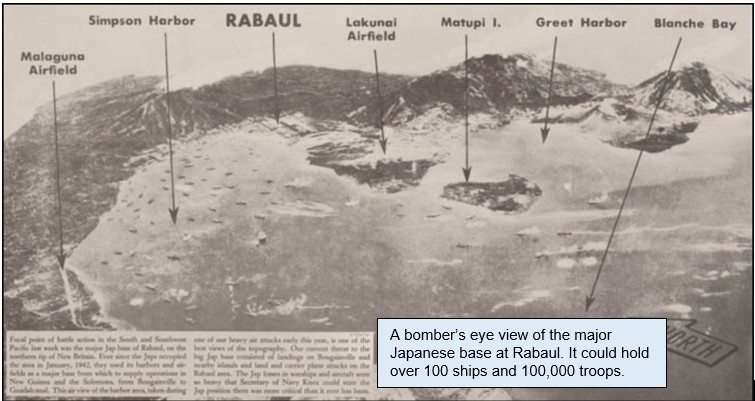
18/21
In Rabaul a Shinto priest came aboard to conduct prayers to appease vengeful spirits.
The Akikaze was later lost with all hands when the American sub USS Pintado fired several torpedoes at the carrier Junyo.
To save the carrier, Akikaze intercepted them; blown to fragments.
In Rabaul a Shinto priest came aboard to conduct prayers to appease vengeful spirits.
The Akikaze was later lost with all hands when the American sub USS Pintado fired several torpedoes at the carrier Junyo.
To save the carrier, Akikaze intercepted them; blown to fragments.

19
Back at Kairuru Island, the St John's mission was converted to a seaplane base then systematically bombed into oblivion by the 5th USAAF.
Fathers Otto May & William Reif, left behind by the Akikaze, were killed; their bodies burned & hidden.
The bodies were discovered in 1945.
Back at Kairuru Island, the St John's mission was converted to a seaplane base then systematically bombed into oblivion by the 5th USAAF.
Fathers Otto May & William Reif, left behind by the Akikaze, were killed; their bodies burned & hidden.
The bodies were discovered in 1945.

20
Post-war, Australians interrogated Rear Admiral Shinzo Onishi, who was the 1943 chief of staff at 8th Fleet Headquarters.
They also interrogated Vice Admiral Gunichi Mikawa, who was the commander in chief.
Both denied any knowledge of the matter.
Two ex-crewmen gave evidence.
Post-war, Australians interrogated Rear Admiral Shinzo Onishi, who was the 1943 chief of staff at 8th Fleet Headquarters.
They also interrogated Vice Admiral Gunichi Mikawa, who was the commander in chief.
Both denied any knowledge of the matter.
Two ex-crewmen gave evidence.

21
As there were a few American nationals among the victims and no Australians involved, the Australian War Crimes Section in Tokyo, having completed its investigation on 18 July 1947, handed the matter over to the American authorities.
They chose to take no further action.
END
As there were a few American nationals among the victims and no Australians involved, the Australian War Crimes Section in Tokyo, having completed its investigation on 18 July 1947, handed the matter over to the American authorities.
They chose to take no further action.
END

POSTSCIPT:
Despite the horrific facts described in this thread, I posted this not to denigrate the Japanese Navy, but to commemorate the innocent and forgotten dead.
Unfortunately, many such "forgotten" incidents occurred in the grim years of 1941 -1945 in South West Pacific Area
Despite the horrific facts described in this thread, I posted this not to denigrate the Japanese Navy, but to commemorate the innocent and forgotten dead.
Unfortunately, many such "forgotten" incidents occurred in the grim years of 1941 -1945 in South West Pacific Area
Typo: it is Kairiru Island, not Kairuru.
Clarification: the two priests were killed and their remains hidden by the occupying Japanese troops months before the 1944 American bombing raids.
• • •
Missing some Tweet in this thread? You can try to
force a refresh

